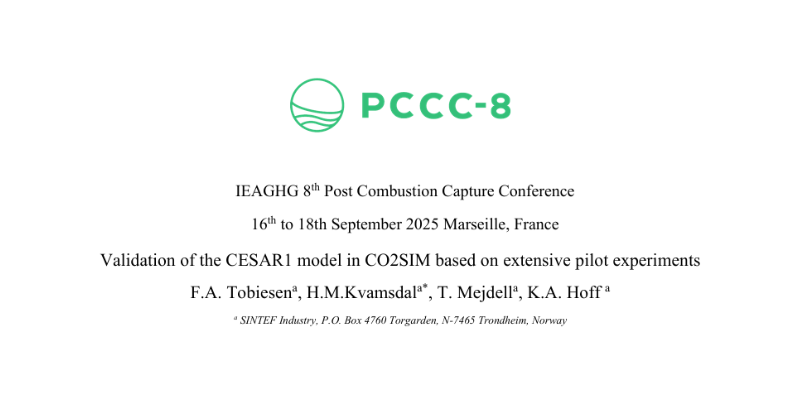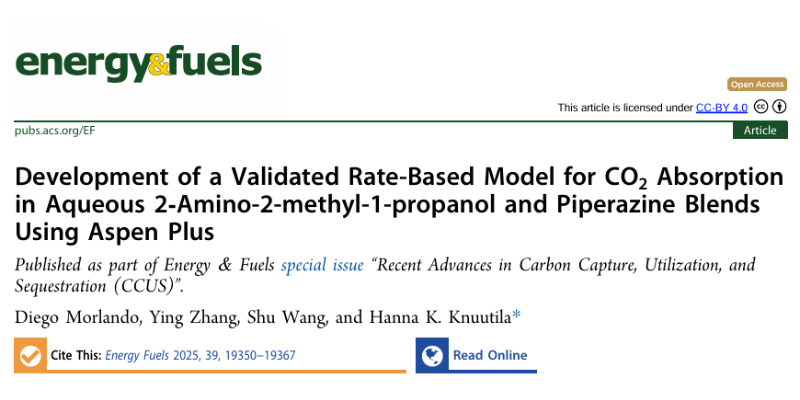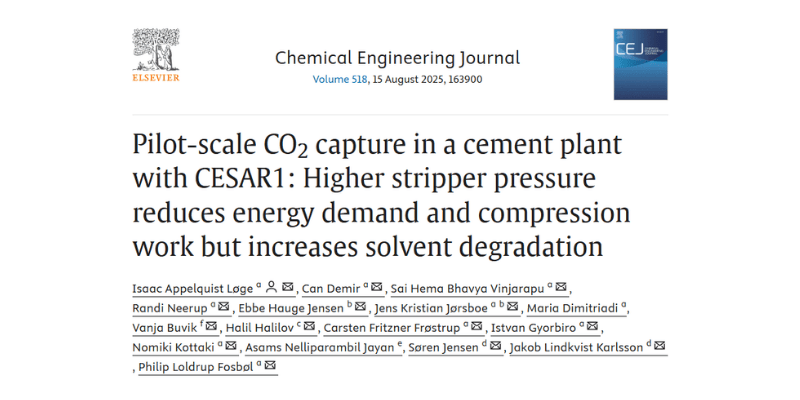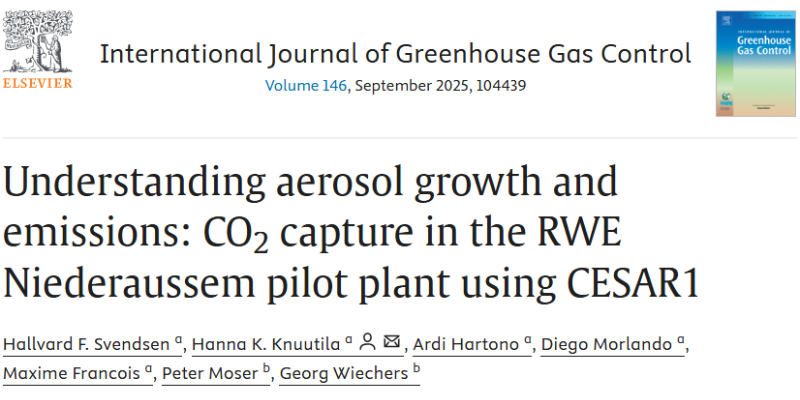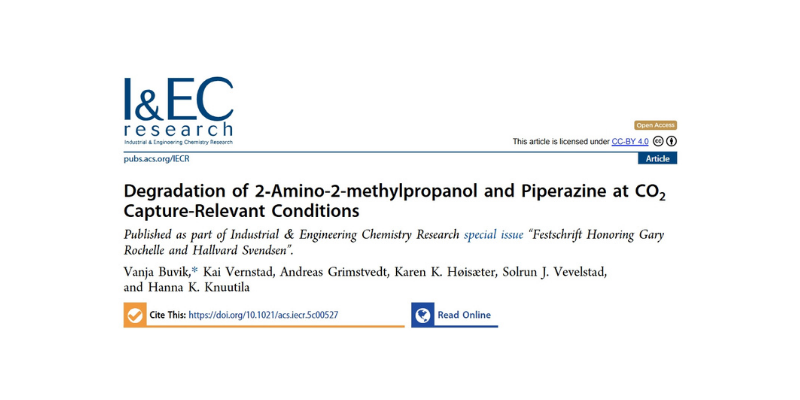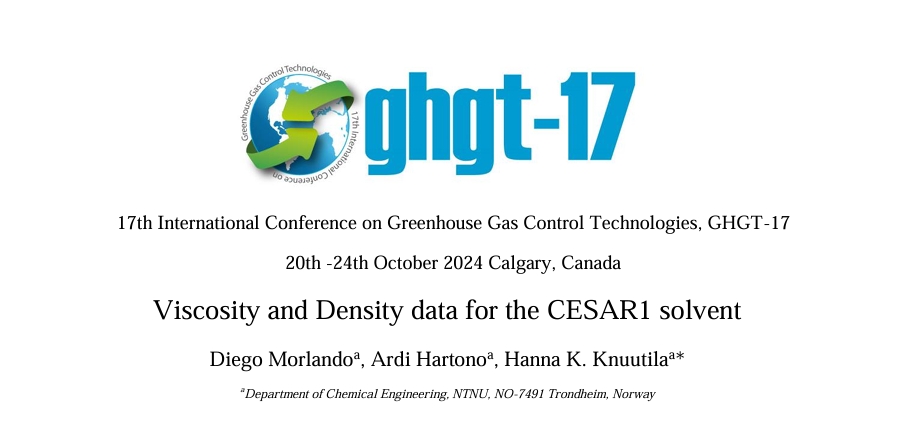Abstract
The CESAR1 model in the CO2SIM simulator has been updated based on new laboratory experiments covering a broader loading and temperature range compared to previous reported data in the literature. The updated model has been validated and successfully improved by extensive testing at the Tiller pilot plant, which operated under a wide range of conditions including CO2 concentration, liquid flow rate, gas velocity, and absorber and stripper temperature. The simulator contains a range of models with different degrees of complexity. For the VLE model, we have chosen to follow a simplified “soft model”- implementation. Such a model does not calculate species and a full equilibrium of all components, such as for example the NRTL model. It is thus much faster and much less prone to over-fitting. The simulated performance of the process aligns very well with the pilot plant performance across 36 various steady state runs. It is concluded that with this updated version, the simulator is well-suited for simulating CO2 capture plants to be integrated with various types of industrial process- and power plants. The main objective is focusing on operational aspects such as total energy requirements, actual performance data such as loading levels, circulation requirements and unit operation sizes. Here, the validation procedures includes a combined plant simulation including absorber, desorber and connected unit operations. Emphasis has been focusing on standardized software for mass validation of test campaign runs.
Keywords: Post combustion carbon capture; amine based CO2 absorption; CESAR1 Solvent; solvent and process modelling; steady state model validation
Authors: F.A. Tobiesen, H.M.Kvamsdal, T. Mejdell, K.A. Hoff (SINTEF Industry).
Publication – Development of a Validated Rate-Based Model
Abstract In this work, we developed a new e-NRTL thermodynamic framework for CO2 absorption in aqueous mixtures of 2-amino-2-methyl-1-propanol (AMP)…
Publication – Pilot-scale CO2 capture in a cement plant with CESAR1
Abstract Carbon capture from hard-to-abate industries is essential. This study investigates the effect of stripper pressure on the performance of…
New Publication: Aerosol Modeling in CO2 absorption using CESAR1
We are proud to announce that Hallvard F. Svendsen, Hanna K. Knuutila, Ardi Hartono, Maxime Francois and Diego Morlando at…
Thermodynamic Properties of CO₂ Absorption in CESAR1 — Essential Data for Better Process Modelling
We are proud to announce a new scientific publication from the AURORA project, authored by Diego Morlando, Ardi Hartono and…
Journal Publication – In-Depth Study of CESAR1 Solvent Degradation Under CO₂ Capture Conditions
A new scientific publication based on research from the AURORA project has just been released in the journal Industrial &…
Conference publication – GHGT-17: Viscosity and Density data for the CESAR1 solvent
Abstract Global warming is a major issue that needs to be addressed and limited. The CESAR1 solvent blend has a…
Conference publication – GHGT-17: “Storage potential evaluation of eastern Mediterranean area as final step of the full chainassessment”
The final step in capturing and storing carbon dioxide (CO₂) emissions is geological storage, where CO₂ is injected deep underground…
Understanding Solvent Degradation in CO₂ Capture – CESAR1 Solvent Degradation in Pilot and Laboratory Scale
The fight against climate change requires innovative solutions, and one promising method is CO₂ capture and storage (CCS). CCS involves…
Turning Waste Into Opportunity: Thermal Reclamation Chemistry of Common Amine Solvents
CO2 capture technology is vital for reducing greenhouse gas emissions. But what happens when the chemicals used in this process…
Closing Knowledge Gaps – Density and Viscosity of Unloaded and CO2-loaded Aqueous AMP-PZ blends
AURORA’s latest scientific journal publication provides experimental density and viscosity data on different unloaded and CO2-loaded aqueous blends of 2-amino-2-methyl-1-propanol…

